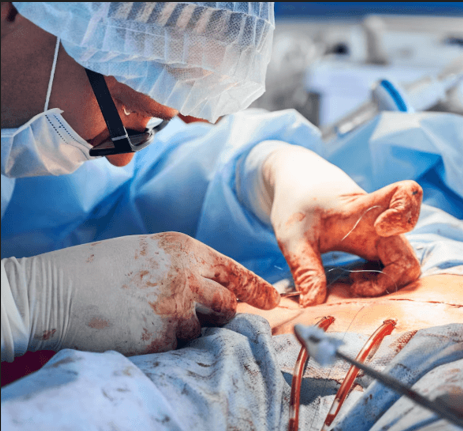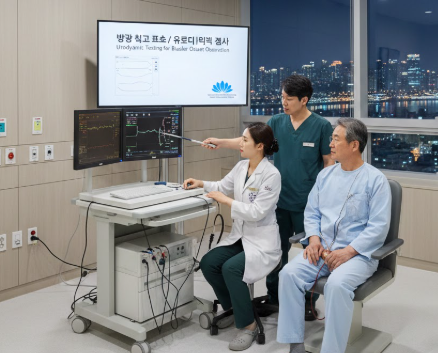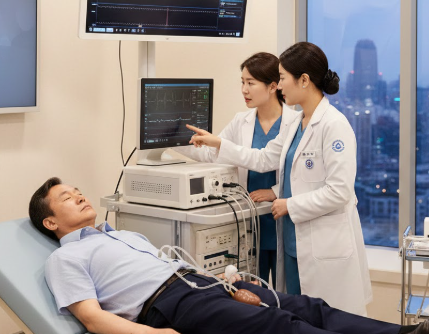Treatment Overview
The Single-Incision Laparoscopic Hysterectomy (SILH) in Korea is a cutting-edge minimally invasive procedure designed to remove the uterus through one small incision, typically at the navel, resulting in a virtually scarless outcome. This innovative technique offers both medical and cosmetic benefits while maintaining high precision and safety standards.
Korea is internationally recognized for advancing single-incision laparoscopic surgery. Hospitals utilize state-of-the-art 3D high-definition imaging, articulating laparoscopic instruments, and robotic-assisted technology to enhance precision and minimize surgical trauma. These capabilities make Korea a leading destination for SILH.
Purpose & Benefits
Purpose:
- Treat uterine conditions such as fibroids, adenomyosis, endometriosis, or prolapse
- Achieve uterine removal with minimal incision and optimal cosmetic outcome
- Preserve surrounding pelvic structures while ensuring safe and effective surgery
Benefits:
- Single small incision with minimal visible scarring
- Reduced postoperative pain and quicker recovery
- Lower risk of infection and adhesions
- Short hospital stay (often 1–2 days)
- Enhanced precision through advanced imaging and surgical tools
- Improved patient satisfaction due to cosmetic and functional results
Ideal Candidates
SILH is most suitable for women who:
- Require hysterectomy for benign or early malignant uterine conditions
- Desire a minimally invasive option with an aesthetic advantage
- Are in good overall health and suitable for laparoscopic surgery
- Have no extensive pelvic adhesions or previous surgeries that would limit single-incision access
Preoperative evaluation in Korea typically includes advanced imaging and consultation to confirm eligibility and customize the surgical plan.
Possible Risks & Complications
While SILH is considered safe and effective, potential risks include:
- Minor bleeding or infection
- Injury to surrounding organs (bladder, bowel, ureters)
- Anesthesia-related complications
- Temporary urinary or bowel changes
- Rare adhesions or pelvic discomfort
Korea’s surgical expertise and advanced technology greatly minimize these risks.
Surgical Techniques Used
Korean hospitals employ highly advanced surgical methods for SILH:
- Single-Incision Laparoscopy: One incision, usually at the navel, for surgical instrument insertion.
- Articulating Laparoscopic Instruments: Facilitate complex maneuvers through a single access point.
- 3D High-Definition Laparoscopy: Improves visualization and depth perception.
- Robotic Single-Incision Surgery: Enhances precision and surgeon control.
- Energy-Sealing Devices: Ensure safe and efficient dissection with minimal bleeding.
These techniques ensure that SILH in Korea achieves both high medical efficacy and superior aesthetic results.
Recovery & Aftercare
Recovery following SILH is typically fast and comfortable due to the minimally invasive approach. Most patients are discharged within 1–2 days and can resume light activity within a week.
Postoperative care includes:
- Pain management and wound care
- Avoiding strenuous activities for 4–6 weeks
- Routine follow-up visits
- Pelvic floor rehabilitation if required
- Nutritional and lifestyle guidance for optimal recovery
Many Korean clinics offer personalized recovery plans that combine physiotherapy, dietary advice, and holistic support to ensure optimal healing.
Results & Longevity
SILH delivers long-term benefits such as:
- Complete resolution of uterine pathology
- Minimal scarring with high patient satisfaction
- Faster recovery and reduced postoperative discomfort
- Preservation of pelvic structure and function
- Lower rates of adhesions and complications
Korea’s leading gynecologic surgeons ensure that SILH achieves both durable medical results and superior aesthetic outcomes.
Treatment Process in Korea
The process for SILH in Korea includes:
- Preoperative Evaluation: Detailed pelvic imaging, blood work, and surgical planning consultation.
- Customized Surgical Plan: Determining the best single-incision approach based on patient anatomy and condition.
- Surgical Procedure: Performed with high-definition imaging and specialized single-port instruments.
- Postoperative Recovery: Includes physiotherapy, nutrition counseling, and regular follow-up assessments.
Korean hospitals provide multilingual patient support, luxury recovery suites, and internationally accredited surgical care, making them a top choice for SILH.
Cost Range
The cost of a Single-Incision Laparoscopic Hysterectomy in Korea generally ranges from USD 8,000 to 15,000, depending on:
- Surgical complexity
- Hospital and surgeon expertise
- Use of robotic or advanced imaging technology
- Extent of postoperative recovery care
This typically includes preoperative evaluation, surgery, anesthesia, hospitalization, and follow-up care.
Popular Clinics
- Severance Hospital (Yonsei University Health System, Seoul): Known for excellence in single-incision laparoscopic surgery with superior outcomes.
- Samsung Medical Center (Seoul): Integrates advanced robotic-assisted technology with single-port laparoscopic surgery.
- Asan Medical Center (Seoul): Offers cutting-edge single-incision hysterectomy with tailored aftercare.
- CHA Gangnam Medical Center: Specializes in minimally invasive gynecologic surgery including single-incision approaches.
- Ewha Womans University Medical Center: Known for patient-centered care and innovation in single-port hysterectomy.




